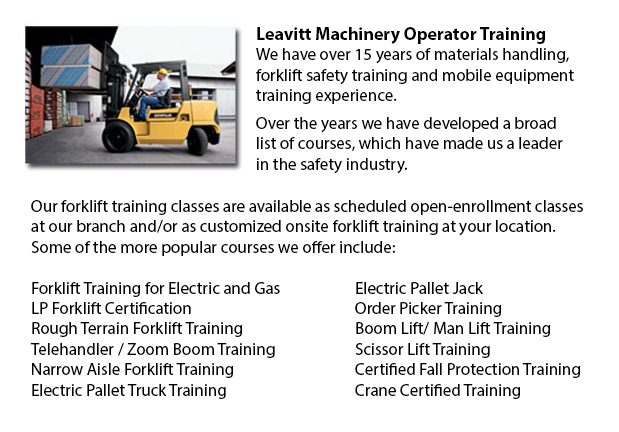
Pallet Stackers Training St Catharines - Pallet stackers are a style of pallet jack that might be employed to stack, transfer and haul commodities positioned on a pallet that are far too heavy for manual lifting. Generally these mechanisms are employed to load and unload goods from trucks and to transport pallets from one location to another within a stockroom of stockroom space. For the most part pallet jacks are manufactured of heavy duty materials to withstand extreme weights. Pallet stackers are often referred to as pallet jacks. They may be operated from a seated, upright or walk-behind position. Pallet stackers are divided into manual and powered varieties.
Pallet jacks are commonly comprised of a pair of forks that are able to slide beneath a pallet, capable of lifting to a desired height or moving it to a specified location. The engine compartment or casing houses the gas-run, electronic or hydraulic gear that powers the piece of equipment.
Normally, pallet jacks come in walk-behind models that are hand-powered. This means that they are moved by pushing and pulling the stacker into its preferred location, while raising the heavy pallets will be operated hydraulically making this task a great deal easier. Utilizing a foot pedal or handle raises the stacker's forks. Squeezing a lever or trigger returns the forks to the floor. These types of pallet jacks are perfect for lighter loads of up to approximately 1 ton or 907.18 kg.
Electric or gas powered pallet jacks can accommodate extreme lifting weights of up to 5 tons or 4535.92 kg. They are physically less demanding than the manual versions thanks to the automated power to lift and let down the stacker's forks. These styles are steered by turning the handle in a particular direction. There is a button on the knob that functions to raise and lower the forks. A throttle set up on the stacker's handle moves the device forward and in reverse. This style of equipment is regularly known as a lift truck and is operated from a sit-down posture.
As the fork width, load maximum and lift peak differ dramatically between different designs, selecting the correct pallet stacker to fit the activity is essential. Some stacker's lift height may permit multiple pallets to be stacked, while others may only permit two at a time. Some models of these forklifts include an changeable fork so as to permit the jack to slide under pallets of unusual sizes and shapes. These designs are useful when a variety of types of pallets are common within a workspace.
-
Rough Terrain Forklifts
Rough Terrain Forklifts Training St Catharines - There are actually two classifications of lift trucks within the production industry, the rough terrain model and the industrial model. Rough terrain forklifts appeared in the 1940's built predominantl... More -
JLG Telehandler
JLG Telehandler Training St Catharines - In the late 1960's John L. Grove, with his wife Cora embarked on on a cross country trip in their RV. Newly retired, after spending several years working with his brother to assemble their crane company into a... More -
Scissor Pallet Trucks
Scissor Pallet Truck Training St Catharines - Scissor lift pallet trucks are created to have the ability to move and stack pallets with a built-in lifting device that permits the pallets to be elevated. This equipment is very functional for working... More -
Pallet Lifts
Pallet Lifts Training St Catharines - A pallet jack is a piece of equipment dedicated in the moving of pallets of many dimensions and weights. They can be used as an appendage for platform lifts, cranes and other types of heavy machinery or be utiliz... More -
Scissor Lifts
Scissor Lift Training St Catharines - The scissor lift or table lift, is a mechanical industrial lift that has been tailored to be utilized in retail, wholesale, manufacturing and production settings. Mechanized scissor lifts have been used chiefly w... More

Forklift Certification St Catharines
TOLL FREE: 1-888-254-6157
St Catharines, Ontario
forkliftcertificationstcatharines.com/
Email Us
About Us


